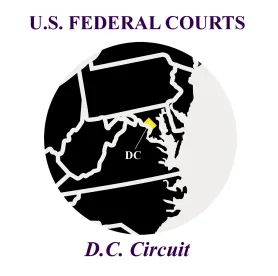Utilities Seek Stay of 6 GHz Order
Last week, Edison Electric Institute, Utilities Technology Council, National Rural Electric Cooperative Association, and American Public Power Association filed an Emergency Petition for Stay of the FCC’s 6 GHz Order in the DC Circuit Court of Appeals. The Association of Public Safety Communications Officials International, Inc. (APCO) also filed a Petition for Stay of the Order. These petitions follow the FCC’s denial of their petitions to stay the application of the rules adopted in the Commission’s 6 GHz Order (Vol. XVII, Issue 34). In their Petition, the utilities explained that the Order “established new rules for sharing the 6 GHz band by authorizing unlicensed indoor low power devices without realistic mechanisms to prevent interference with licensed incumbent uses, including those used by electric utility 6 GHz networks that monitor and protect electric grids during emergencies such as a wildfire or a hurricane.” While the legality of the Order is being determined, the Utilities request a stay to prevent the sale of new 6 GHz devices. The Court has given the FCC until today, September 14, 2020, at 4:00 pm to file a response to the petitions.
FCC Releases Draft 3.45-3.55 Order and FNPRM
At the September 30 Open Meeting, the Commission will consider an Order and Further Notice of Proposed Rulemaking regarding the 3.45-3.55 GHz Band. This follows the announcement by the White House and the Department of Defense to make 100 MHz in the 3450-3550 MHz available for 5G use by the end of the summer (Vol. XVII, Issue 33). According to a draft and summary released last week, the Order eliminates the non-federal radiolocation service allocation in the 3.3-3.55 GHz band and the nonfederal amateur allocation in the 3.3-3.5 GHz band but allows incumbent licensees to continue operating in the 3.45-3.55 GHz band until a future date, relocate non-federal radiolocation licensees to the 2.9-3.0 GHz band, allowing them to continue operating on a secondary basis to federal operations, and allow amateur licensees to individually determine appropriate alternate spectrum from existing available spectrum allocations. The FNPRM proposes to make 100 MHz of spectrum available for flexible use in the 3.45-3.55 GHz band and seeks comment on how best to coordinate federal and non-federal use.
Tower Lighting and Marking Consent Decree
The Commission has entered into a consent decree with the Pentecostal Temple Development Corporation to resolve violations of the Commission’s lighting and marking rules. Specifically, the Commission found that Pentecostal Temple failed to properly light two antenna structures, failed to notify the FAA of lighting extinguishments, and failed to clean or repaint the antenna structures as often as necessary to maintain good visibility. As part of the consent decree, Pentecostal Temple certifies that all current antenna structure registrations (ASRs) comply with the Commission’s rules, agrees to pay a civil penalty of $1,900, and agrees to enter into a compliance plan.
LMCC Requests FCC Address Harmful Interference
Last month the Land Mobile Communications Council (LMCC) requested that the FCC take expedited action to address multiple instances of harmful interference from newly authorized digital television (DTV) stations to incumbent Part 90 private land mobile radio systems (PLMR), including T-Band licensees. The LMCC stated that PLMR licensees began experiencing interference when new DTV stations were repacked into channels between Channel 14-20 began operating. The LMCC noted that cases of interference require rapid resolution, and a process should be in place to allow interference complaints by DTV stations to PLMR stations to be “fast-tracked.”
Timothy A. Doughty, Kathleen Slattery Thompson and Adam (AJ) Reust contributed to this article.







 />i
/>i